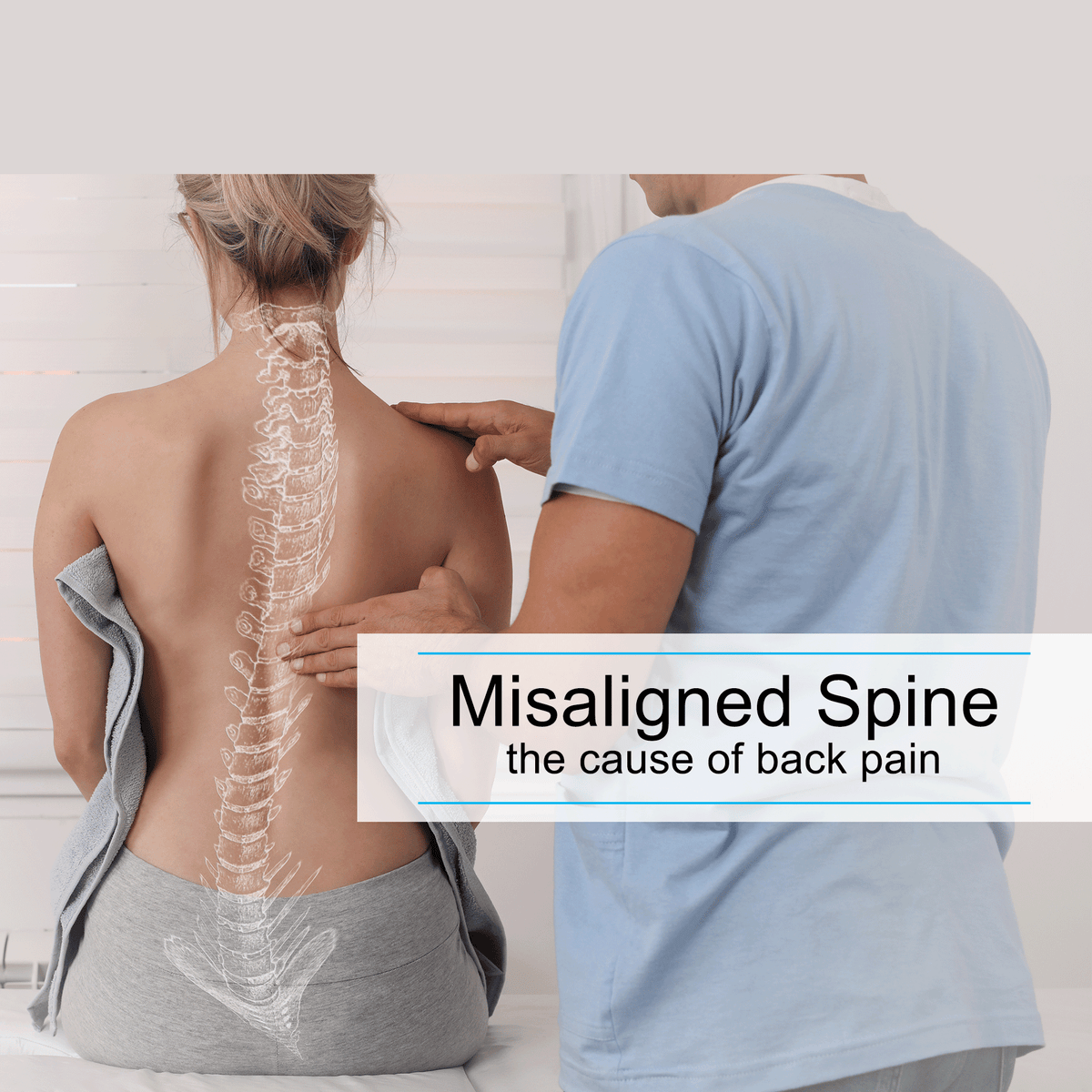
Misaligned Spine: The Cause of Back Pain
|
|
Time to read min
|
|
Time to read min
Back pain plagues millions of individuals worldwide, ranking as the number one complaint brought to doctors in the United States alone. Its prevalence underscores the urgent need for a deeper understanding of its root causes and effective strategies for relief. From herniated discs to sciatica, stenosis to chronic low back tightness, back pain manifests in various forms, often resulting from years of improper movement and postural misalignments.
Back pain isn't just a localized issue; it's a leading cause of disability worldwide. As individuals age, lower back pain becomes increasingly common and debilitating, highlighting the importance of proactive measures to address this pervasive issue. A healthy spine should possess a natural "S" curve, allowing for full range of motion without limitations. However, the sedentary nature of today's technologically driven society often leads to the adoption of a "C" curve shape in the spine, resulting in uneven distribution of load-bearing and restricted mobility.
Many symptoms of back pain, such as herniated or bulging discs, are merely manifestations of underlying issues rather than the root cause itself. At the core of the problem lies a misaligned spine that deviates from its healthy "S" curve design. Addressing this misalignment and realigning the body is crucial for mitigating symptoms and restoring optimal function.
Properly rebalancing and realigning the body to its original anatomical design is key to alleviating back pain. By redistributing the body's weight evenly among all vertebrae of the spine, the root problem can be addressed, and symptoms mitigated. This realignment not only relieves pain but also restores the spine to its healthy "S" curve design, enabling individuals to resume their favorite activities without limitations.
While conventional treatments may provide temporary relief, a holistic approach that addresses the root cause of back pain offers long-lasting benefits. Techniques such as posture therapy which are targeted exercises that can help realign the spine and strengthen supporting muscles, promoting overall spinal health and well-being.
Prevention is key to avoiding future bouts of back pain. Incorporating regular exercise, maintaining good posture, and practicing proper body mechanics are essential habits for promoting spinal health and preventing injuries. Investing in ergonomic furniture and tools, such as supportive chairs and standing desks, can also help alleviate strain on the spine during daily activities.
In conclusion, understanding the root causes of back pain is essential for finding lasting relief and reclaiming a pain-free life. By addressing postural misalignments and realigning the body to its healthy "S" curve design, individuals can alleviate symptoms and restore optimal function. Through a combination of holistic approaches and preventive measures, back pain can be effectively managed, allowing individuals to pursue their passions and live life to the fullest. So, take proactive steps today to invest in your spinal health and embrace a future free from the grip of back pain.
